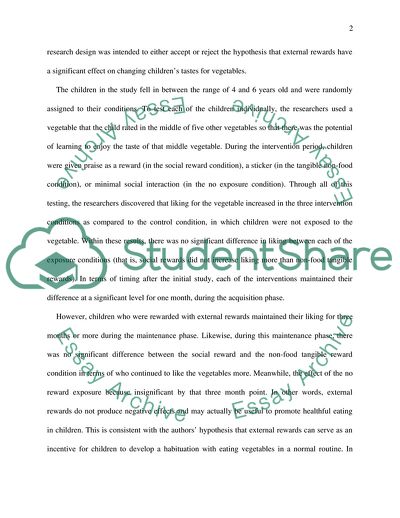Cite this document
(Eating for Pleasure or Profit: The Effect of Incentives on Children's Research Paper - 1, n.d.)
Eating for Pleasure or Profit: The Effect of Incentives on Children's Research Paper - 1. https://studentshare.org/psychology/1752044-eating-for-pleasure-or-profit-the-effect-of-incentives-on-childrens-enjoyment-of-vegetables
Eating for Pleasure or Profit: The Effect of Incentives on Children's Research Paper - 1. https://studentshare.org/psychology/1752044-eating-for-pleasure-or-profit-the-effect-of-incentives-on-childrens-enjoyment-of-vegetables
(Eating for Pleasure or Profit: The Effect of Incentives on Children'S Research Paper - 1)
Eating for Pleasure or Profit: The Effect of Incentives on Children'S Research Paper - 1. https://studentshare.org/psychology/1752044-eating-for-pleasure-or-profit-the-effect-of-incentives-on-childrens-enjoyment-of-vegetables.
Eating for Pleasure or Profit: The Effect of Incentives on Children'S Research Paper - 1. https://studentshare.org/psychology/1752044-eating-for-pleasure-or-profit-the-effect-of-incentives-on-childrens-enjoyment-of-vegetables.
“Eating for Pleasure or Profit: The Effect of Incentives on Children'S Research Paper - 1”. https://studentshare.org/psychology/1752044-eating-for-pleasure-or-profit-the-effect-of-incentives-on-childrens-enjoyment-of-vegetables.


